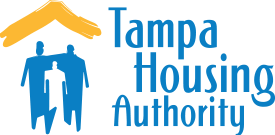RAD Rent Fact Sheet
What Is RAD?
The Rental Assistance Demonstration (RAD) is a program of the Department of Housing and Urban Development (HUD) that seeks to preserve affordable housing.
Public housing units across the country need more than $26 billion in repairs and many public housing agencies (PHAs) do not have enough money to keep units in good condition. RAD provides PHAs a way to repair units without depending on additional money from the government.
RAD allows PHAs to convert a public housing property's HUD funding to either:
- Section 8 project-based voucher (PBV); or
- Section 8 project-based rental assistance (PBRA).
This conversion of funding type lets PHAs borrow money to make needed repairs.
How Is Rent Calculated in Public Housing?
In public housing, there are two ways to determine rent payments:
- Income-based rent is generally calculated at 30% of your household's income.
- Flat rent is based on the rent charged for similar units in the private market. It is not affected by income changes.
Most public housing residents already pay income-based rent, so most residents will not have a rent increase because of RAD.
However, households who currently pay a flat rent may have their rent change because the PBV and PBRA programs do not allow flat rents. Under PBV or PBRA, you will pay an income-based rent.
Will My Rent Increase Under RAD?
Most residents will not have a rent increase because of RAD. If you are paying a flat rent in public housing, you will most likely have to pay a bit more in rent over time.
In these limited cases, if your rent increases more than 10% and requires you to pay more than $25 per month in additional rent, your new rent will be phased in. This means you will not have to start paying the full amount of the new rent immediately. Instead, your rent will increase a little each year. Your PHA must phase in the rent increase over at least 3 years, but may choose to phase in the increase over 5 years.
If the increase in your rent is less than 10% or not more than $25 per month, this change in rent will be effective immediately.
Increase Less than 10% or $25 No Phase-In
Change in Rent: In public housing, you paid a flat rent of $400 per month. Your income was $1,400 per month and remained the same after conversion.
In PBV or PBRA, you will pay an income-based rent of 30% of your income, which calculates to $420 per month ($1,400 x 30% = $420).
This is a difference of $20 per month ($420 - $400 = $20), which is a 5% increase.
No Phase-in of Rent Increase: The new rent of $420 per month will not be phased-in because your rent did not increase by more than 10%, and your additional rent was less than $25. You will begin paying $420 per month when your property converts to PBV or PBRA.
Increase Greater than 10% or $25 Three-Year Option
Change in Rent: In public housing, you paid a flat rent of $400 per month. Your income was $1,500 per month and remained the same after conversion.
In PBV or PBRA, you will pay an income-based rent of 30% of your income, which calculates to $450 per month ($1,500 x 30% = $450).
This is a difference of $50 per month ($450 - $400 = $50), which is a 12.5% increase.
Phase-in of Rent Increase: The new rent of $450 per month will be phased-in over 3 years, because your rent increased by more than 10% and you have to pay more than $25 per month in additional rent as a result of RAD conversion.
What if My Income Increases After a RAD Conversion?
When your property converts through RAD, you will sign a new lease. Any policies on income and rent increases will be included in your lease.
In the PBV program, PHAs set their own policy for evaluating income. Under PBRA, an owner must adjust your rent every time your adjusted income increases by $200 or more per month.
During your next annual reexamination after the RAD conversion, your income and rent will be recalculated. If your income has increased, your rent payment will be adjusted.
Definitions
- Annual reexamination - A process that occurs each year where your income and family size are reviewed to ensure you are paying the correct rent and living in a right-sized unit.
- Flat rent - Rent set at a specific amount based on the rent charged for similar units in the private market. A flat rent does not increase or decrease when your income changes. Flat rents are only allowed in public housing.
- Income - Your total income is calculated by taking your total income, minus any exclusions or deductions like large medical expenses. Your income is determined at the time of admission and during any reexamination.
- Income-based rent - Rent generally calculated at 30% of your household's adjusted gross income. Project-based Section 8 programs only allow income-based rent.
- Rent Phase-In - If your rent increases by more than 10% because of RAD conversion and requires you to pay more than $25 per month in additional rent, you will not have to pay this increase immediately. Instead, you will pay more in rent each year for either 3 or 5 years.
RAD Resources
For more information, please see the revised RAD Notice issued in June 2015 available on RAD's website at HUD.gov/rad, under the 'Library' tab. You will also find more resources, including RAD case studies under the 'Press Room' tab, on the RAD website.



